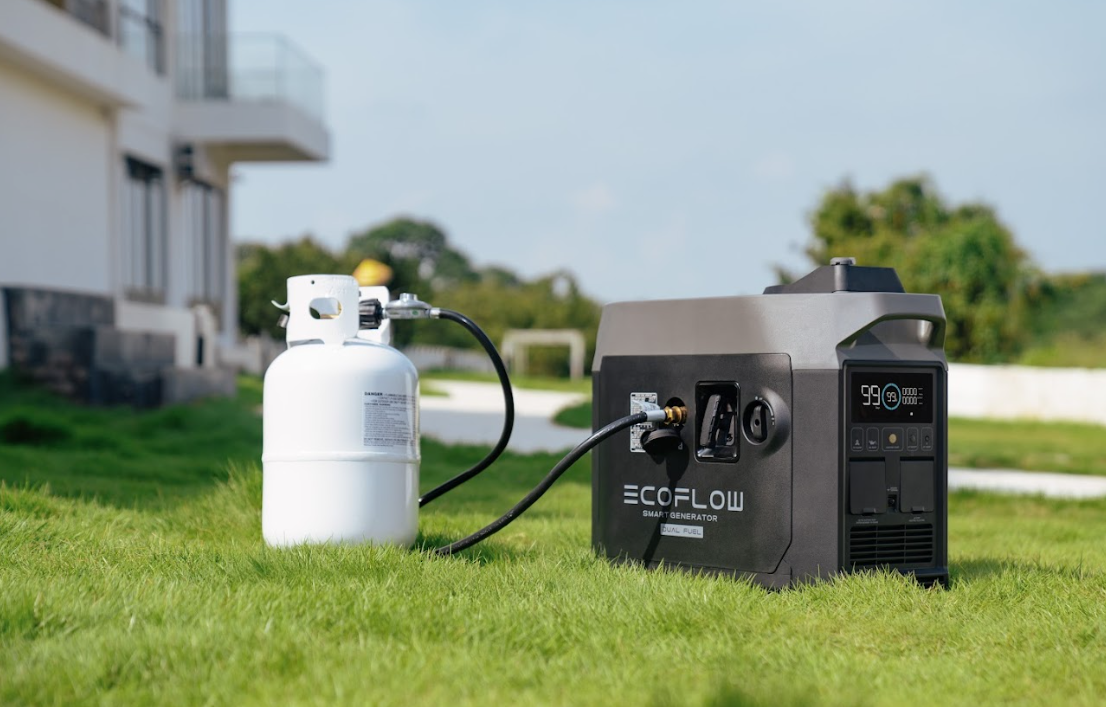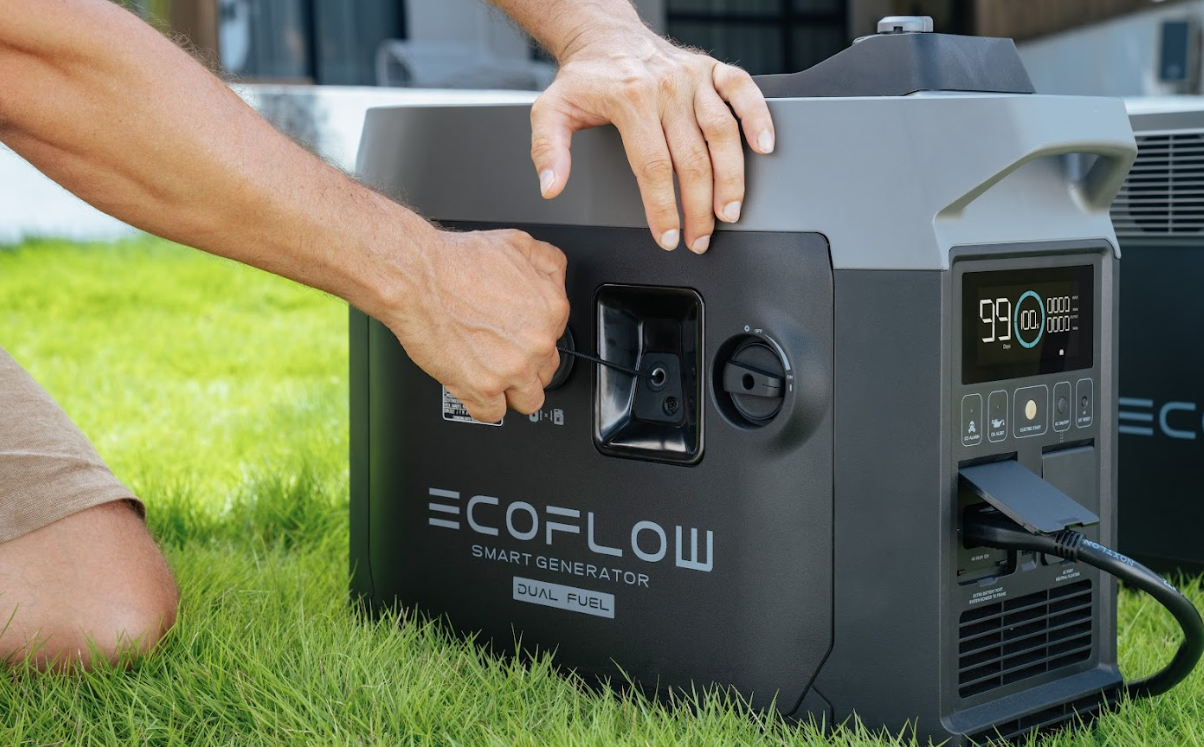Energizing Agriculture: Portable Power Stations in Farming
Modern farming runs on electricity. Irrigation systems need power to pump water. Cold storage keeps crops fresh. Smart sensors monitor soil and weather. LED lights help plants grow.
But here's the problem: many farms can't get reliable power where they need it most.
Traditional power grids don't reach remote fields. Extension cords can't stretch across hundreds of acres. And when the power goes out, critical farm operations stop cold.
The solution is emerging from an unexpected source: portable power stations
. These battery-powered units are changing how farms think about electricity, bringing reliable power wherever farming happens. But why exactly do farms need this new approach to power?
Why Agriculture Desperately Needs Portable Power
The Remote Power Problem
Many agricultural areas sit on the edge of power grid coverage. Running electrical lines to remote fields costs thousands of dollars and often isn't practical. Even when grid power exists, rural areas experience more frequent outages than cities.
A single outage can ruin entire crops or harm livestock.
Farm Work Never Stays in One Place
Farm operations constantly move around the property:
- Harvest operations shift from field to field
- Livestock need water pumps in different pastures
- Monitoring equipment must move with crop rotations
- Seasonal work requires power in changing locations
Traditional solutions mean either expensive electrical installations or noisy, fuel-hungry gas generators.How to choose a silent generator.
Gas Generators Create New Problems
Farmers have relied on gas generators for decades, but they bring their own challenges:
- Noise pollution - loud enough to disturb livestock and neighbors
- Constant maintenance - fuel deliveries, oil changes, repairs
- Unreliable starting - especially in cold weather
- Exhaust fumes - can contaminate crops or livestock areas
The Portable Power Solution
Portable power stations solve all these issues at once. They provide clean, quiet, reliable electricity that goes wherever farming operations need it. They can be charged from grid power or solar panels and run for hours or even days without refueling.
Most importantly, they integrate seamlessly into existing farm operations without requiring expensive infrastructure changes. This flexibility opens up entirely new possibilities for farm management.
But what specific jobs can these power stations actually handle on working farms?
Real Applications: Where Portable Power Transforms Farming
Based on these needs, portable power stations are finding practical uses across every aspect of modern agriculture. Each application solves real problems that farmers face every day.
Irrigation Systems Get Reliable Remote Power
Small to medium irrigation systems work perfectly with portable power stations. Drip irrigation controllers use very little electricity but need steady power for precise timing. Small water pumps can run for hours on a single battery charge. When combined with solar panels, these systems can operate independently for weeks at a time.
A typical setup might power a drip irrigation system for a 5-acre vegetable plot located half a mile from the nearest electrical connection. Instead of spending $15,000 to run power lines, farmers can use a $3,000 power station with solar panels for completely autonomous irrigation control.
Smart Farming Equipment Stays Connected
Modern farms use lots of electronic monitoring equipment. Soil moisture sensors track when crops need water. Weather stations predict optimal spraying conditions. Security cameras monitor remote equipment and livestock. GPS systems guide precision agriculture applications.
All of these devices need steady electrical power, but most use very little electricity. A portable power station can keep multiple monitoring devices running for weeks between charges. This makes it practical to deploy smart farming technology anywhere on the property, not just near existing electrical connections.


Mobile Charging Stations for Field Work
Farm work requires lots of battery-powered equipment. Agricultural drones need frequent charging during crop monitoring flights. GPS units guide planting and harvesting operations. Electric tools handle fence repairs and equipment maintenance. LED work lights illuminate night operations during busy seasons.
Traditional approaches mean carrying multiple spare batteries or frequently returning to base for equipment charging. A portable power station becomes a mobile charging hub that can power multiple devices simultaneously. Workers can stay in the field longer and complete more work in each trip.
Backup Power for Critical Operations
Some farm operations simply cannot stop. Dairy milking systems must run on schedule. Livestock watering systems need constant operation. Grain drying equipment prevents crop spoilage. Egg incubators maintain precise temperatures for hatching.
During power outages, portable power stations can maintain these critical functions until grid power returns. This prevents thousands of dollars in losses from spoiled milk, dehydrated animals, or ruined crops. Many farmers consider this insurance value alone worth the investment cost.
Cold Chain and Market Support
Fresh produce loses value quickly without proper temperature control. Small refrigeration units maintain quality during transport to markets. Cooling fans prevent heat damage in storage areas. Temperature monitoring ensures food safety compliance.
Portable power stations can support cold chain operations from farm to market. They power refrigeration during transport, provide electricity for farmers' market booths, and support temporary cold storage during harvest peaks.
Looking at all these practical applications, many farmers ask the obvious question: why not just stick with gas generators that have worked for decades?
Why Choose Portable Power Over Gas Generators?
Generators have been the traditional go-to for off-grid power, but in use, they bring real problems (as explained in the previous section) for farming.
In contrast, modern power stations offer:
| Feature | Portable Power Station | Gas Generator |
| Fuel Type | Rechargeable battery | Gasoline/Diesel |
| Emissions | None | CO₂ + fumes |
| Noise Level | Low (under 40 dB) | High (60–80+ dB) |
| Maintenance | Minimal | Frequent |
| Indoor/Enclosed Use | Yes | No (risk of carbon monoxide) |
| Solar Compatibility | Yes | No |
Which factor matters most? We'd say pollution production. People care more about the environment these days. Gas generators produce exhaust fumes that can contaminate organic crops or livestock areas. They also create noise pollution that affects farm animals and rural communities. But for portable power stations? During operation, the emission is zero——they integrate perfectly with solar energy for completely clean energy.
Also, the ease of use makes daily operations simpler:
Gas generators require:
- Fuel storage and handling
- Regular maintenance schedules
- Safety training for operators
But portable power stations need:
- Only charging and switching on
- Safe operation by anyone on the farm
- No special training or safety concerns
Understanding these advantages naturally leads to the next question: how do farmers choose the right portable power station?
Five Key Factors for Choosing Farm Power Stations
Match Power Capacity to Your Actual Needs
Step 1: List every device you want to power
Step 2: Check how much electricity each one uses
Step 3: Calculate total power demand and runtime needs
Power usage examples:
- Small devices (timers, sensors): 10-50 watts
- Medium equipment (pumps, fans): 100-500 watts
- Larger items (tools, refrigeration): 500-1500 watts
Sizing rule: A 1000-watt power station can run 100 watts of equipment for about 10 hours, or 500 watts for about 2 hours.
Evaluate Solar Charging Potential
Farms typically have excellent solar resources. Solar charging dramatically extends power station usefulness.
Solar sizing guide:
- Daily use of 2000 watt-hours = need 400-600 watts of solar panels
- Depends on local sunshine hours
- Works best for continuous operations like monitoring systems
Consider Output Options for Equipment Compatibility
Choose power stations with multiple output types:
- Standard household outlets (AC power) - for most tools and lighting
- 12-volt car-style outlets (DC power) - for specialized farm equipment
- USB ports - for phones, tablets, small electronics
Assess Weather Protection and Durability
Look for these features:
- IP65 or higher weather protection rating
- Wide operating temperature range
- Shock-resistant construction
- Reinforced corners and sturdy handles
Farm environments test equipment with dust, moisture, temperature extremes, and rough handling.
Plan for Long-Term Support and Battery Life
Consider:
- Battery lifespan (quality units provide 5-10 years of regular use)
- Warranty coverage and local service support
- Expansion possibilities for growing needs
- Battery replacement programs
With these selection criteria in mind, farmers can confidently choose power stations that deliver long-term value.


EcoFlow: Proven Solutions for Agricultural Power
EcoFlow has developed portable power solutions specifically for demanding outdoor applications like farming. The systems combine the ruggedness farms need with smart features modern agriculture demands:
- Weather-resistant construction handles dust, moisture, and temperature extremes
- Fast charging capabilities mean quick turnaround between uses
- Comprehensive solar compatibility provides energy independence
- Modular approach allows starting small and expanding later
Popular Agricultural Configurations
Entry-level systems
- Perfect for fence charging, tool operation, basic monitoring
- Handle essential power needs without major investment
- Great for testing portable power benefits
Mid-range systems
- Power irrigation controls, multiple monitoring devices
- Provide emergency backup for small operations
- Sweet spot of capability and value for most farms
Heavy-duty systems
- Handle large irrigation equipment, whole-facility backup
- Designed for commercial-scale operations
- Can replace multiple gas generators
Smart Features for Modern Farming
EcoFlow's agricultural solutions include smart monitoring through mobile apps, allowing farmers to track power usage, schedule equipment operation, and receive system alerts from anywhere on their property. This remote management capability integrates well with other precision agriculture technologies.
The company provides specialized support for agricultural customers who need reliable equipment for time-sensitive farming operations. Technical support teams understand farming applications and can recommend specific configurations for different agricultural scenarios.
This level of agricultural focus ensures farmers get systems that work reliably in real farming conditions rather than equipment designed for casual outdoor use.
The Bottom Line
Modern agriculture needs electricity that goes where farming happens, not farming limited to where electricity already exists.
Portable power stations are delivering this flexibility right now. They solve fundamental problems that have limited farm electrification for decades.
EcoFlow's agricultural solutions ensure farmers have access to power designed specifically for farming's unique requirements.
The transformation from "farming around fixed power" to "power that follows farming operations" represents more than just equipment upgrades.